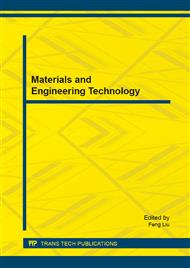p.941
p.949
p.959
p.964
p.969
p.973
p.978
p.982
p.988
The Comparison and Analysis of SEMG in Upper Limb Movement between Hemiplegic Patients and Healthy People
Abstract:
In this paper, the surface electromyogram (EMG) signal of the hemiplegic patients and healthy people were collected when completing upper limb movements, then the general EMG characteristic rules of healthy people in common action were analyzed, and the EMG characteristics of hemiplegic patients in time and frequency domain were extracted. By comparing and analyzing the EMG characteristics between the hemiplegic patients and healthy people, the results showed that the order and magnitude of muscle contraction of hemiplegic patients were not comply with the general laws of healthy people, which resulted in disorganized movement.
Info:
Periodical:
Pages:
969-972
Citation:
Online since:
January 2015
Authors:
Price:
Сopyright:
© 2015 Trans Tech Publications Ltd. All Rights Reserved
Share:
Citation:


